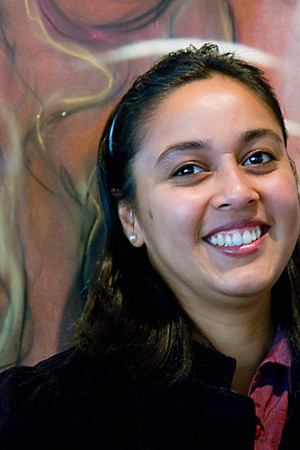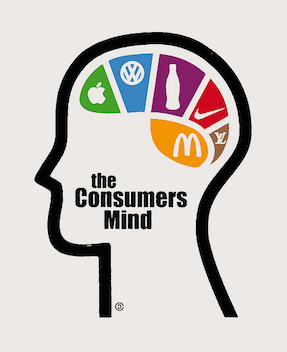
Path-breaking sales are generated when two things are in play. Love for your brand, and trust worthiness of your product. So what are the pre-qualifying factors that lead your customers down this path? At the time of decision making, these 3 R’s play a big role on your consumer’s psyche:
1) Recommendations: Are essentially ‘transference of trust’. Merriam Webster defines it as, “the act of saying that someone or something is good, and deserves to be chosen.” So once you’ve had a positive experience you are more likely to vouch for that yourself.
With every sensory experience we encounter with a brand, it tallies up towards the overall perception of that brand, and the future likelihood of it being recommended to others.
We’ve all had a first-hand experience with recommendations at different stages of our lives:
- Whether it was in the form of an ex-boss talking to you about an exciting opportunity at his new firm
- Staying away from a restaurant because your partner had a terrible service there
- Going with your friend’s personal experience while choosing a daycare for your child
It’s this interdependency and reliability quotient that comes forth when choosing a product/ service based on the power of a recommendation!
2) Reviews: Consumer awareness is at its all time high. The findings of Local Consumer Review Survey revealed that approximately 72% of consumers trust online reviews as much as personal recommendations. A Siegel+Gale report shows a direct correlation between higher consumer awareness to 31% greater revenue growth for 10 most-known B2B brands. It all goes to prove that people today like to make educated choices when it comes to investing their money or their resources.
Every comparable B2B or B2C product or service goes through a lens of closer scrutiny and quality check in the form of online reviews. Consumer opinions are highly valued and play a dominant role in influencing future buyers.
As an online shopper myself, I tend to gravitate towards those products that have received a multitude of online reviews versus the ones that do not have any reviews listed. I attribute this to the power of crowdsourcing!
3) Ratings: Ratings reflect a quantifiable benchmark of what’s considered as superior quality compared to the sub par products.
Porter Novelli’s ConsumerStyles report finds that 60% of Millenials and 56% of Gen Xers are more likely to rate items they like than those they don’t like. So getting the product right is the foundation of great ratings.
In our day-to-day lives every decision we take is influenced by how everything is rated and ranked around us:
- Health regulations – Influencing our personal care and household products we use
- Consumer reports safety standards – Key decision making tool for buying your next SUV
- Movie Ratings- Dictates appropriateness of which movie to watch with your kids
- Performance evaluation at work – Determines your bonus package and promotion eligibility for the next quarter
So while we live in a consumerist society where every choice and decision is subliminally influenced by a recommendation, review or rating, its the collective power of customer advocacy that can ultimately make or break your product and its direct impact on your bottom-line!
I’d love to hear what influences your choices and decisions?
Photo by Christopher Dombres

How a company’s public image is perceived has a lot to do which what is being written and published about them in the news. It takes skilled public relations practitioners to build and strengthen a brand though their content. I spoke to one such expert, Steve Polilli from SAS asking him to share some of his wisdom about PR. Here’s what he had to say.
VI: Please share a little about your professional background. How long have you been in PR?
SP: I’ve been in PR for 16 years. Prior to that I was a journalist for 12 years, with time spent in both trade publications and daily newspapers. Journalism was great preparation for PR because I had a great feel for what reporters desire in terms of business news. On the flip side I had a very rigid definition of news based on my journalism experience and I had to learn how to look at increasing the news value of an announcement.
VI: What do you look for in a good PR story? What makes for a compelling story?
SP: First, I consider which publications might be interested in a story. If it’s a story that I think would attract the eye of the Wall Street Journal, that’s the absolute best. If it’s only interesting to a very focused trade publication, that’s a less compelling story based on the limited readership.
The broadest stories are the best. If a story would interest my mom, that’s a very broad topic relevant to many. If it’s something that would be compelling only to a PhD statistician, that’s very limited. However, you have to do both to reach all audiences.
Another consideration is that a business story has to be told in a way that shows the benefit to a reader who might be considering a purchase. In B2B PR, that’s the bottom line: sell more stuff. It’s too easy to fall into telling the story in an inwardly focused way. How much would you care about a news story that describes a company’s strategy for defeating the competition vs. a story that told you how a new product can save you money and make your job easier.
A good story has to have some independent validation. Sure, every company can go on and on about why its products are best, but that’s hardly an independent information source. Isn’t the information more credible if it comes from the lips of another customer or independent observer? The best PR stories always rely on independent validation in some way.
VI: What’s the big deal about coining the right subject line? Why is that so important?
SP: Editors, reporters and bloggers are often flooded with news releases and story pitches. Just as a new release is structured to have the most compelling information in the headline or top of the text, so too must emails have a compelling subject line. They may never be opened otherwise. At the same time it’s important to be brief and factual in the subject line. If you write a subject line that you think might “tease” a reporter in opening the email, you run a big risk of annoying them. Brevity is best—try to capture the essence in a few words.
VI: Is writing a press release a form of storytelling and if so how is it different from other forms?
SP: Yes, writing a press release is a form of storytelling and that seems to be the hot term right now in marketing and PR. But it’s not a chronological narrative where you typically start at the beginning and follow the thread. The story might be how a product creates value for customers, or how one customer used it for competitive advantage. The story might be told with the ending (product value) cited up front and then moving backwards on how they came to that positive result.
VI: How do you think the field of PR is evolving over the years?
SP: The big change, of course, came from the development of email and the Internet. Before then you were dealing with print publications and news releases were spread through wire services and overnight mail. Go back further and it was largely snail mail and press conferences. Print is evaporating, press conferences are much more infrequent and any kind of hard copy news release distribution is virtually extinct. So, the tools have fundamentally changed in the last two decades.
As the methods have changed so have the targets changed for PR professionals. In the print age, PR was only focused on editors and reporters because they were the gatekeepers to spread the word of company news to the broader public. Now the PR audience directly reaches the press and other audiences. Certainly bloggers and other market influencers are now part of the target. And PR also directly reaches the public. Consider the effect of technologies such as search engines. Someone might be interested in a certain topic and use Google alerts or RSS feeds which pull in news releases even if the reader isn’t press. Because of this there is a huge emphasis on search engine optimization of news releases.
VI: Parting words. What advice would you give to upcoming PR professionals?
SP: Constantly improve your writing and learn as much as you can about the business (or non-profit) you are promoting. The writing is critical. Avoid falling into marketing-speak and clichés. For example, I cringe when I hear someone say “game changer” because it is currently so overused.
Try writing things simply. A good example is the word “utilize,” which is just a pompous way of saying “use.” And remember that improving your writing is a career-long process that doesn’t end when you graduate college. You have to have a bit of a thick skin to be in PR but the most important aspect of this is when you receive feedback on your writing.
Feel free to tweet, like and comment if you enjoyed hearing from Steve and learning about what a crucial role content plays in building brand images.
Photo by FindYourSearch
Related post –
Traits of a solid PR professional

If you wanted to see a dinosaur fossil where would you look? If you wanted to see the first turtle submarine where would you go? If you wanted to see the first computer where would you find it? If you wanted to find out your ex-friend’s current “status” where would you look? You catch the drift, don’t you?
We have been progressively evolving as an online generation, a far cry from the Flintstones in the Stone Age! Just looking back at our contemporary historical periods since the past few decades, we have made major strides through the years.
We’ve evolved from the Machine Age dealing with gigantic mass production machinery to the Information Age which has been about digitizing our economy, dispelling volumes of information using technology. This era also brought the onset of computers – a game changer in the way modern society started communicating. The rapid evolution of computers and the web in our daily life meant dissolving boundaries. It meant faster and more real-time communication, international knowledge exchange and learning, exploring and tapping into personalized needs, changing how we do business via e-commerce.
 The Information Age gave birth to a digitized world mimicking and surpassing all that transpires through our physical interactions. What we see, hear, learn, who we befriend, share with, communicate and collaborate with have been made available electronically.
The Information Age gave birth to a digitized world mimicking and surpassing all that transpires through our physical interactions. What we see, hear, learn, who we befriend, share with, communicate and collaborate with have been made available electronically.
You can like, dislike, comment, poke, vote, buy, sell, promote, recommend..and much more digitally! This led to the metamorphosis of our Social Age. An era that has humanized technology focusing on the many forms of societal interactions and amplifying our inherent need to communicate, express, show and tell.
You can now make a new friend on Facebook, date online via Match.com, look for a job on Monster, connect with a business associate on LinkedIn, buy your latest book on Amazon, share your vacation pictures on Flickr, tweet about what you ate for lunch on Twitter, look up your ancestors on Ancestry.com or even publish your life history on Blogger.
The World Wide Web has made us a closely knit modern society leaving behind a huge digital footprint of our lives. So while my generation might still make a trip to the Smithsonian museum to look at the first species of dinosaurs, there’s no telling where the future generations might look to learn about us a species!
Standing on the bridge of Big Dinosaurs to Big Data the future landscape appears infinite! There’s no telling what this new era will bring with it, and the potential implications of Big Data for our future?
So what archaeological finds do you think your great, great great grandchildren will find, while digging for your information? What’s your prediction?!
Photos by JD Hancock and algogenius

Halloween just came and went and now we are left with barely two months before this year vanishes. While the kids must be totally charged and living the moment dressed up in creative costumes and high on candy, you can’t help wonder in retrospect where did the past ten months go? Did life treat me well, or was I tricked into making hasty and regretful choices?
I’m sure most of us must have started 2011 with high hopes, eager anticipation and maybe even wrote down a few constructive goals to accomplish this year. There is always something exciting and adventurous about starting a new year wondering what it might hold for us as individuals. It’s like the creative and colorful imagination of a six year old who tries to figure out what am I going to dress up as, and who am I going to be this Halloween?
For some, I bet this year turned out just as well as they imagined and had planned for it. So kudos to that! For others their path may have been a bit circuitous, you take a slight detour as life throws you a curveball, and we get reeled into a slightly different path than what we started off with.
Our goals and expectations from life may be myriad ranging from finding a good job, to going back to school for an advanced degree, or saving up for the dream house, running a marathon, or perhaps losing the last 10 stubborn lbs! We all choose our own life path that’s relevant and important to us. At some junction of our lives we all get cornered to make a choice that might intimidate or overwhelm us. For some that might mean shedding back a bit of ourselves, or chasing other goals that may have taken over as our new priorities.
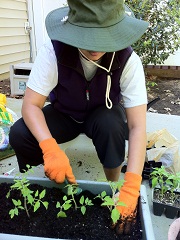
When a consumer walks into a store with the intention of buying let’s say – coffee, and stares at an aisle stocked with a dozen different makes. What do you think is running in her head when she reaches out and chooses that particular one and adds it to her cart? I find that making that choice today is almost a herculean task. Way too many options! It’s like going in and being asked to choose the precise shade of green you’d like to paint your walls with. At least that’s how I see most of the products today – as subtle shades of green.
Point I’m trying to make is businesses today are very much at par in being technologically savvy and in-tune with what their competition has to offer, and matching that. What that translates into for customers is a whole array of products that look pretty identical in their features and capabilities. So going back to my original question, how do you think she chose one type of coffee over the other? It was quite simply the brand she preferred.
So what constitutes the brand? I see it as the aura, the vibe, the sentiments attached and basically the essence of your product that emerges which forms to be the differentiator! In traditional marketing, it’s all about getting the 4 P’s in the perfect proportion – Product, Price, Place and Promotion. There is a lot of planning, strategy, research, science and advertising amongst other things that is involved in the making of a company’s brand image.
It’s dealt with strategically, scientifically and purposefully, in a kind of ‘causal relationship’ between the initiators within the company and their external audience. This all happens in a streamlined and structured fashion, feeding the external audience with the finished product in the form of the ‘agreed upon’ image, identity and messaging the company would like its audience to accept as the brand.

While this model still works in several cases, we have been witnessing a rising trend in how brands are being created and perceived lately. Like the advent of spring, social media has infused a new life into how a brand is born and defined today. People are no longer simply accepting this definition of a brand that is presented to them like a perfectly packaged shining trophy that they can only admire, but not touch. They are more interested in getting up close and personal with it even if it means getting your fingerprints all over it.
Brands are no longer produced in a sterile, climate controlled environment. With the explosion of social media the sheer definition of – ‘what is a brand?’ has evolved and now grown organically.
The users are no longer looking for a picture perfect image because that seems sterile and made-up. For companies it’s about being more vulnerable not necessarily in a negative opportunistic kind of way but appearing more real, approachable and accessible to its audience. The digital age has shifted the paradigm from a funnel type communication, to a much more intertwined and overlapping model. One where each of the factors: be it the opinion of your competitors, support from your partners, the chatter from your user communities, the online product reviews, or the strategic press releases and marketing campaigns, all infuse with one another influencing the brand image today!
 Today’s social media has given each of us a voice that collectively determines what morphs into a company’s brand image and identity. Brand has become this multi-faceted and multi-dimensional entity today that has the colors and flavors of numerous stakeholders.
Today’s social media has given each of us a voice that collectively determines what morphs into a company’s brand image and identity. Brand has become this multi-faceted and multi-dimensional entity today that has the colors and flavors of numerous stakeholders.
The onus lies on the companies to not fight or defy this flow but to embrace it and cultivate it by truly building an empire targeted towards your customer centric needs and solutions. This is when you stop ‘talking over’ but start truly ‘engaging with’ your audience. So do you believe you have that green thumb?
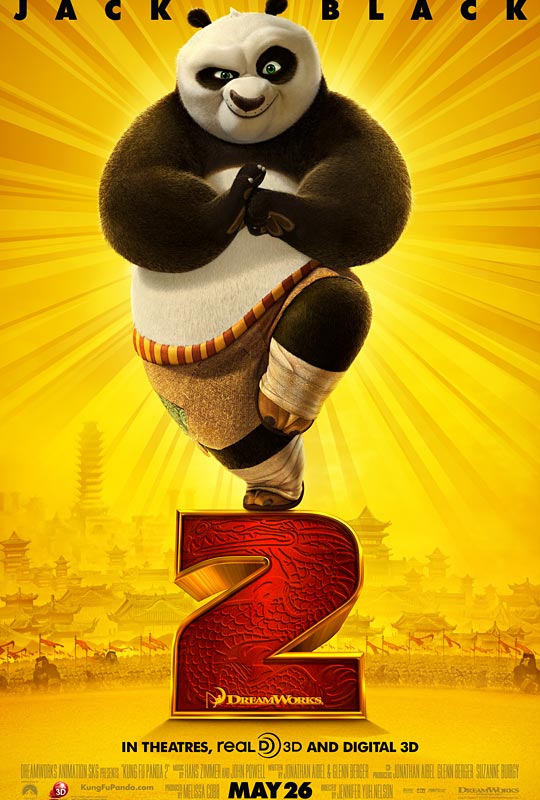
Kung Fu Panda 2 knocked it off the ballpark for me this Memorial Day weekend. I typically don’t write movie reviews but this one inspired me to write about it today. The salience in product marketing is all about understanding your customer’s mindset, catering to their appeals, packaging to their needs and presenting it in the most attractive way possible for a successful outcome.
This movie reminded me that the success to consumer acceptance, product saleability and ultimate bottom-line lies in finding the pulse of your audience and honing your efforts in that direction. Now that requires a play of ingredients that need to be added just in the right proportion to make it click. Kung Fu Panda 2 seems to have gotten that recipe right. Packaged optimally in a span of 90 minutes this movie displays a colorful canvas of comedy, adventure and drama all wrapped in one. The animation is visually spectacular with an amazing eye to detail in every character’s emoticons, their colorful attires and even the aura each of the characters bring to the screen with the use of voice-overs and background music.
The PG rated movie eloquently depicts spirituality with central message about ‘finding your inner peace’ tied in with the yin and yang iconism throughout the movie. It has brilliant comic timing tied in with action sequences centered on the protagonist Panda ‘Po’. There is the underlying reflection of the cultural nuances tied in with one’s heritage and ancestry, and a sense of adventure, thrill ride and triumph, by gaining mastery over your weaknesses, in this case by using Kung Fu! All these elements are wonderfully threaded together using the ancient art of story telling and narration creating a mental vacation for the viewers.
As humans, we all connect and relate with each other through our life experiences and the stories we share with one another. This movie (I think) has that cross-generational and cross-cultural appeal that is not just a visual entertainer but also one that has a wonderful moral attached to it. One that reminds us to elevate towards our full potential no matter where we come from, by ultimately finding our inner peace. Who knew a big furry panda, a tigress, a monkey, a crane, a snake and a mantis could possibly teach us that. Its true when they say movie making is truly a magical experience! Let me know what you thought of the movie when you see it!

I first wrote this blog post for the Women’s Initiatives Network (WIN) group while contracting at SAS. They have been gracious yet again, in letting me repost it here.
One unique trait of us as humans is our resilience and creativity in the face of adversity. Our ability to think creatively towards a solution is challenged the most during extraordinary times. This ability comes from our instinctual survival techniques right from our Stone Age that has taught us to not just to survive but thrive over the centuries.
Different factors such as the environment, economy and society have gone through several cycles of change raising with it our stakes to discover, improvise and reinvent ourselves with the times. Changing times have given rise to changing needs – giving birth to new opportunities for growth and development, on a personal level as well as a sociological level.
Today, we live in a technology-driven society that dictates how we interact, communicate and do business with each other. We have all become creatures of modern comfort in a gadget-friendly world allowing us to fulfill our different needs and aimed at making our lives easier. However, on a fundamental level our primary needs have always been centered on survival and sustenance.
That got me thinking about what skills are needed to thrive and sustain in today’s modern workforce? I reached out to a few of the thought leaders while at SAS to seek their advice and opinion. I was looking forward to hearing what they had to say coming from different backgrounds, sensibilities and with over 140 years of collective experience! What I learnt in return was both surprising and delightful. Sharing their collective revelations below:
Adele Sweetwood – Vice President, Americas Marketing - The one skill would be communication – all forms, verbal, written, presentation… With the right communication, you will enable all aspects of growth and leadership. If you were to ask me about the one ‘trait’, I would say, authenticity. People respond positively when you are genuine.
Diana Levey – Marketing Director, JMP - You need to be flexible. Whether you’re at home or in the office, things seldom go as planned. So being able to change on a dime without getting flustered or having your nose out of joint is about as important a trait or skill as I know of.
Jenn Mann – Vice President, Human Resources - Regardless of your industry, it is important to not only be competent in your area, but to have the right attitude. Talent is not enough! Attitudes have the power to lift up or tear down a team. The right attitude also could refer to a “positive attitude”. What I mean by the right attitude is:
- Willingness to admit mistakes
- Seeing strengths in others and nurturing those strengths
- Not taking yourself too seriously
- Living life with some humility
- Having a “can do” attitude
Paul Kent – Vice President, Platform Research and Development - Be useful! You have to combine your technical skills with your sensory ones. Identify an area this is being underserved and apply yourself to it. (Cheerfully is always a good modifier). Your peers and hopefully your boss too, will recognize you for this. The harder question is how does one learn/practice/polish their “useful bone”…that’s usually called work-experience!
Radhika Kulkarni – Vice President, Advanced Analytics - Communication is a very important skill in all careers. Listen to all the input and be open to all the feedback given to you. Learn to articulate your message in a language that is understood by your audience. This is especially important when you work in a cross-functional team with diverse skills where everyone contributes one piece of a larger picture.
Scott VanValkenburgh – Senior Director, Alliances - Empathy. It may sound a bit strange, but empathy towards your own life, its limits and possibilities and empathy towards others. This helps bring perspective, balance and understanding in both your personal and professional relationships. Today, the need and positive effect of human interaction and connection is at an all-time high, and unless you have empathy, one’s career and life will fall short of its full potential.
Suzanne Gordon – Chief Information Officer and Vice President of IT - If you are a ‘manager’ I would say, it’s building an atmosphere of trust where collaboration can happen easily and swiftly. You need to listen to the people that work for you, you need to encourage them to work out issues amongst themselves and not run to you with problems. You need to support and trust them and hire good people! If you are an ‘individual contributor’ I would say its persistence, not giving up if you have a good idea.
Suzanne sums it best for us by sharing this quote, “Success seems to be largely a matter of hanging on after others have let go.” – William Feather
Did their advice resonate with you? Can you think of any other skill you believe is vital to thrive and sustain in today’s economy? Let’s hear it.
Photo by country_boy_shane
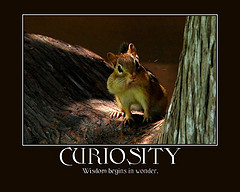
I first wrote this blog post for the Women’s Initiatives Network (WIN) group at SAS. They have been gracious in letting me repost it here.
I believe that no matter where you are in your career path – beginner, experienced or advanced – it’s important to stay on your toes and nurture the quality of being naturally curious. As humans we all are born with this innate capability of curiosity. As children this quality is further pronounced as we try to engage with and explore the world around us. It’s through this formative emotion that represents a drive to investigate, understand, and learn new things while we go through life and experience things for the first time.
At every stage of our life, we all experience moments that are new and novel to us that require sense making. We attempt to tread that and learn about it in many ways, one of which we’ve all done as children – ask questions! Asking questions and quenching that curiosity centered on a new thing has been an age old tradition that we’ve all graduated from one stage to another as children to adults. It has helped us discover, challenge and stimulate our intellectual curiosity as we mature through the years.
Even through our vocational life, it’s equally important that we try to retain that quality that keeps the learning alive and informational interviews are a great way to achieve that. We all are gifted with the abundance of collective intelligence and knowledge bank gained from our existing network of smart, intelligent and experienced peers and seniors. Each one of us brings something unique to the table based on our background, skills and cultural sensibilities. So why not tap into that collective intelligence of your network to extend and strengthen your vocational learning?
Whether you are out there seeking your first break and trying to get a leg in after college, thinking of transitioning and making a complete career switch from one field to another or vying for the success ladder to get a promotion in your existing job, informational interviews can be a useful medium to help achieve that.
Important considerations – Although I address these types of meetings as ‘interviews’ there is a stark difference in these types of interviews with regular ‘job interviews’ and hence should be treated differently. The focus of this interview should be:
- Treat it as an opportunity for self-discovery and self-assessment
- Ask relevant questions centered on that person’s career, company and profession
-
Explore the career opportunities that lie within
-
Use it as an avenue to find your motivation and inspiration seeking advice from someone you admire
-
To network and build on a new contact
-
Overall, really treat it as a learning ground to prepare, improve and build on your skills, qualifications and profession
-
The most important differentiator being, do not treat this opportunity as a back-door entry to a job. Don’t go blatantly seeking a job, it can potentially put-off your interviewee and might result in cutting short your interview time, where you could’ve spent all that time asking great questions and getting to know your contact better!
-
Keep an open mind, respect their time and always walk away thanking your contact for their time and advice.
If done right, you would’ve walked away not only having made a new contact, but someone who could potentially be your mentor down the road, with continued interaction
In addition to acquiring the standard job interviews, seeking the right informational interviews and having the ability to conduct these tactfully will in many ways catapult you and your career in the right direction. So don’t be afraid to ask questions and share that knowledge with your network. Wouldn’t you agree?
Photo by ankakay
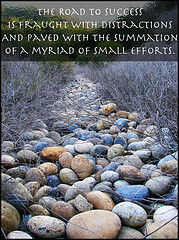
I recently attended a webcast at SAS initiated by Women’s Initiatives Network (WIN) group and wrote this post for their internal blog. It was a lunch and learn and they have been gracious in letting me repost it here.
As part of WIN, I was glad to attend and participate in both of the recent events. The first was a discussion panel made up of our very own SAS stars in February “How Agile is your Career?” A shout out to Jenn Mann, Suzanne Gordon, Adele Sweetwood, Jamie Robbins, and Nelle Schantz for making this an entertaining, engaging and informative panel for us with active audience participation! The one I attended yesterday via webcast was a talk on “How to Perform Like a Rock star & Still Have Time for Lunch” by author Orna Drawas. She used the art of storytelling and shared anecdotes from her own life to engage with the audience and offer secrets of her success in her career thus far.
I, for one, learn and remember better by writing things down, especially inspirational words and hand-me-down wisdoms. Here is a brief recap of what struck me as commonalities from our speakers to the road of success, be it your career or family life.
Being successful is a relative term and more importantly, a state of mind – Each one of us owns a different yard stick to measure our own accomplishments and a path that leads to our happiness. It’s like one of those fuzzy words that Orna spoke about that can be open to interpretation by different people. The goal to ‘being successful’ is not relative to another person’s success or ‘idea of success’ but an internal drive and zest to do better in our daily lives – all the little things that lead to a bigger milestone in our lives. So the trick is to not be afraid to carve your own path and take baby steps to achieve it at your own pace.
Treat your personality like putty – Play with it till you like the shape that emerges. I state this with a caveat that it does not literally mean swaying with the lightest breeze! Fact is there is always room for improvement and creativity, so don’t deprive yourself of what you can become by being closed-minded and rigid. The trick in that lies with truly listening to what others have to say about you and finding creative ways to improve upon that sense of self without feeling attacked or defensive. More importantly, it comes with a quiet sense of inner confidence and faith in yourself that will help you strive higher.
Don’t take yourself too hard or seriously – This was a repeated theme that jumped out to me, as much as it is important to be goal centric, purposeful and conscientious of how we lead our lives, it’s almost necessary that we don’t forget to have fun. The trick is to retain the ability to see the lighter side of things in life. There’s a great deal to learn from who we all were, as kids! Adventurous, unassuming, playful, creative and innocent. I’m sure life will throw us challenges at every turn and corner, winners are those who ‘sharpen their saw’ and the ability to cope with it all and emerge triumphant!
Just my two cents! Would love to hear your perspective on it.
Photo by FindYourSearch





